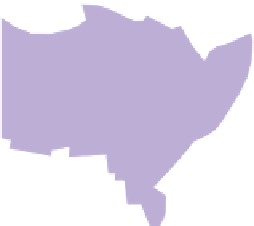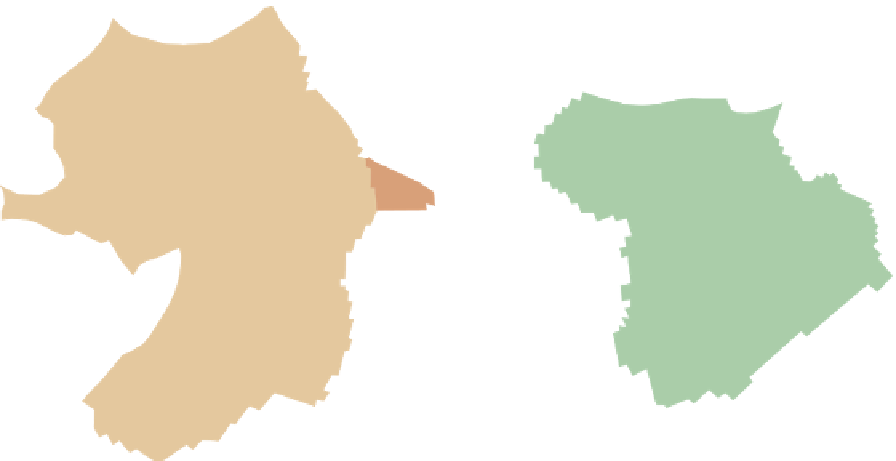Geography Reference
In-Depth Information
EURASIAN
PLATE
N
O
EURASIAN PLATE
JUAN DE FUCA
PLATE
ANATOLIAN
PLATE
GORDA
PLATE
CARIBBEAN
PLATE
PACIFIC
ARABIAN
PLATE
RIVERA
PLATE
PHILIPPINE
PLATE
INDIAN
PLATE
COCOS
PLATE
PLATE
AFRICAN PLATE
NAZCA
SOUTH
AMERICAN
PLATE
AUSTRALIAN
PLATE
AUSTRALIAN
PLATE
PLATE
SCOTIA PLATE
WORLD TECTONIC PLATES
Subduction zone
Sea floor spreading
ANTARCTIC PLATE
0
2000
4000
6000 Kilometers
0
2000
4000 Miles
Figure 13.2
World Tectonic Plates.
© H. J. de Blij, P. O. Muller, and John Wiley & Sons, Inc.
damage in remote Somalia (in Africa), it had claimed approximately 300,000 lives
and ruined the livelihoods of millions more. The 2004 Indian Ocean tsunami illus-
trated one consequence of the tourist industry: drawing millions of tourists and
workers to coasts makes them more vulnerable to coastal hazards.
Geography is a discipline in which the relationship between humans and the
environment is a primary concern. One of the most infl uential nineteenth-century
texts on this relationship,
Man and Nature
(1865), was written by the geographer
George Perkins Marsh. In 1955, geographers were centrally involved in an inter-
national interdisciplinary symposium on “Man's Role in Changing the Face of the
Earth.” This symposium, like Marsh's earlier topic, focused primarily on local and
regional changes. More recently, a symposium led by geographers on “The Earth
as Transformed by Human Action” picked up where the 1955 discussion left off,
addressing global environmental changes. The geographer's concern with how
things are organized on Earth and how places are connected provides an analytical
platform from which to consider human-induced environmental change.
As the study of environmental change has moved forward, one of the most
important lessons we have learned is that global environmental systems are inter-
connected at numerous temporal and spatial scales. For example, the release of
chlorofl uorocarbons
(CFCs) in the northern hemisphere contributed to a hole in
the Earth's ozone layer over Antarctica. Industrial production in the Netherlands
and Germany contributes to acid rain in Scandinavia. The use of water from the
Rio Grande for irrigation in northern New Mexico affects the amount and quality
of the river's water that fl ows along the Texas-Mexico border. Human actions—the
activities we undertake individually and collectively—are increasingly important
factors in all sorts of global environmental changes. To confront these changes,
we must consider the complex relationship between humans and environment.













































































































































































































































































































































































